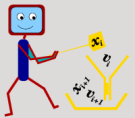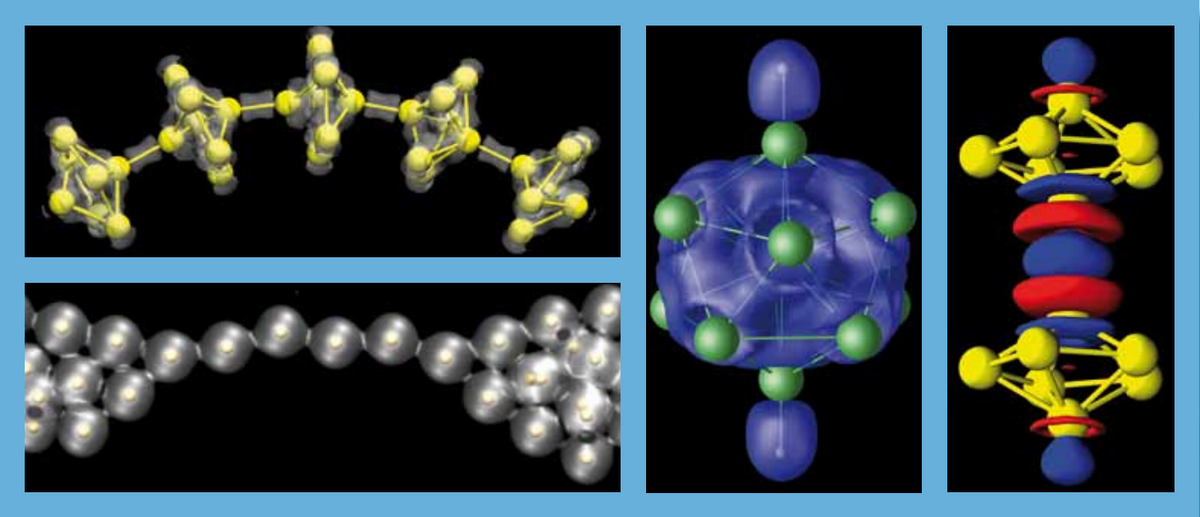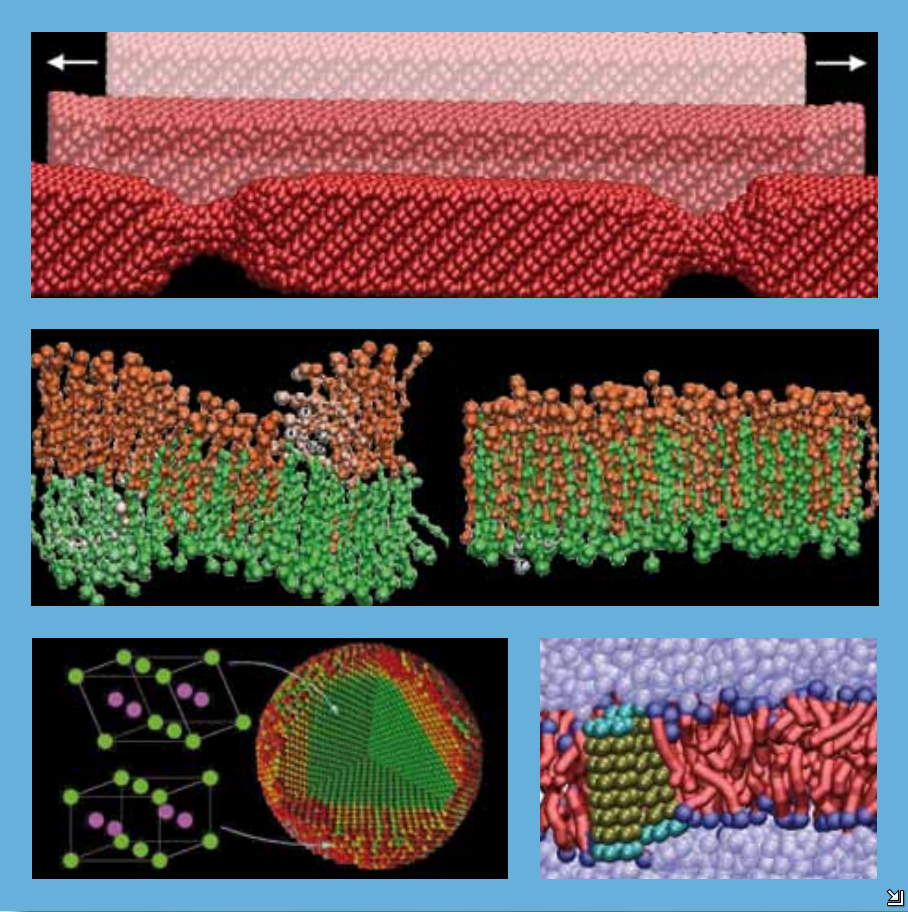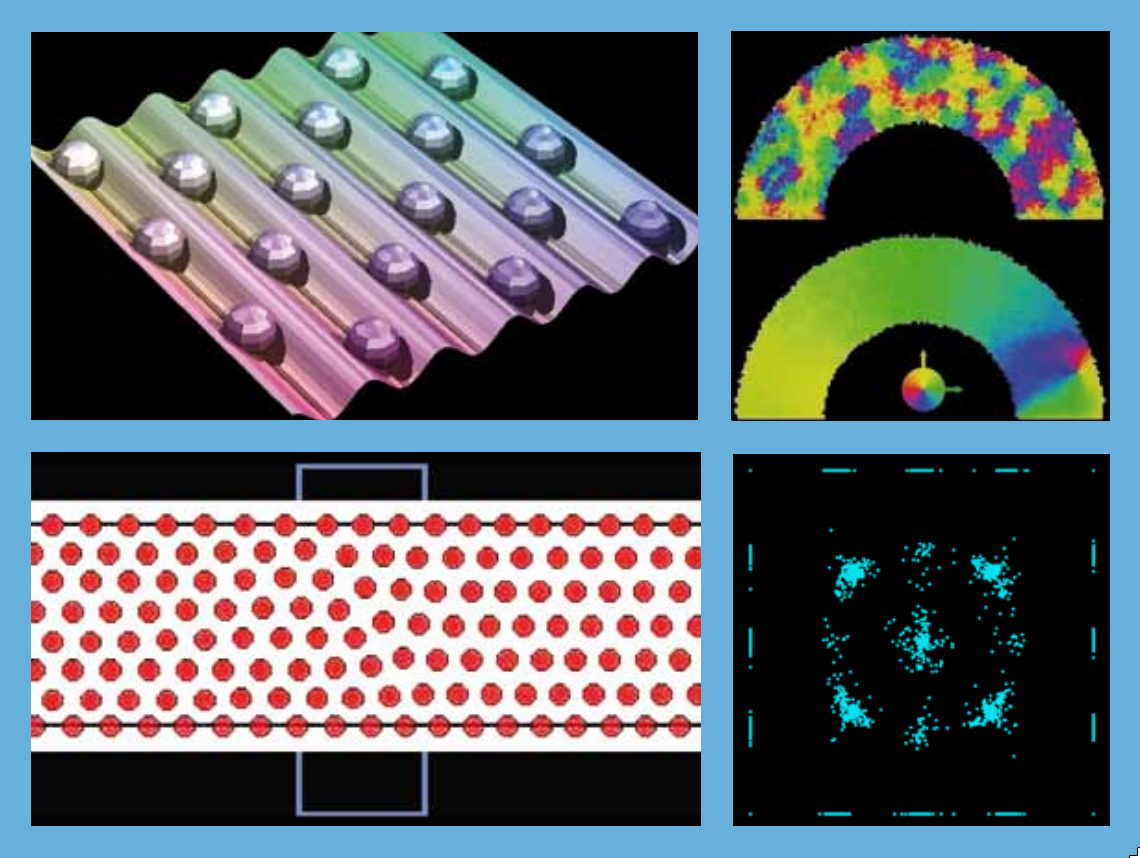
Nanostructures in reduced geometry have become an interesting research field in the last years. Despite the fact that by experimental techniques many structural-, elastic-, electronic-, and phase-properties of systems in the size of a few nanometers have been obtained, the theoretical investigations and analyses are still in an initial stage. This is partly due to the fact that systems which are far away from the thermodynamic limit (with infinitely many particles) due to their finite size are difficult to handle by analytical methods which are suitable for systems with either few particles (2-5) or in the limit of infinitely many particles. In this field computer simulations have become more and more important since nano-systems in reduced geometry contain about 10-10.000 particles, which is nearly ideal for the application of computer simulation methods.

Our research on nanostructures is embedded in the Collaborative Research Center (Sonderforschungsbereich) 1214 "Anisotropic Particles as Building Blocks: Tailoring Shape, Interactions and Structures" with the projects A4 and B4 . Besides this our activities are linked to recent research goals in the SFB 767: Controlled nanosystems (projects A06 and C07) and in the COST program COST-MolSimu: Forging the missing link: from Molecular Simulations to Nanoscale Experiments.
Our scientific research topics range from structures and conductance in single atom chains over structural and electronic properties of clusters to properties of colloids in external fields and reduced geometry. As numerical methods we use modern Monte Carlo, path integral Monte Carlo, Molecular Dynamics, Car-Parrinello, Density functional theory, non-equilibrium Green's function and Smoothed Particle Hydrodynamics simulation techniques as well as finite size scaling methods.
Many important results have been obtained by the support of supercomputer centers (NIC/Jülich, HLRS/Stuttgart, SSC/Karlsruhe).




